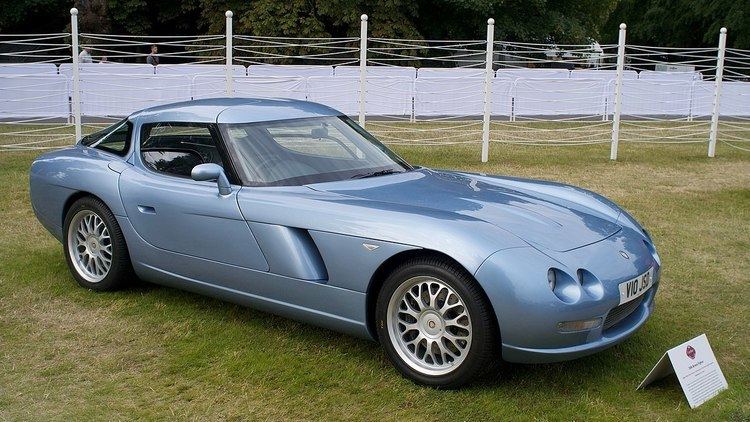Production 2004–2011 Body style 2-door coupé | ||
 | ||
Layout Front-engine, rear-wheel-drive | ||
The Bristol Fighter is a sports car produced by Bristol Cars in small numbers from 2004 until the company suspended manufacturing in 2011. It is generally classed as a supercar.
The coupé body, which has gullwing doors, was designed by former Brabham Formula One engineer Max Boxstrom and gives the car a Cd of 0.28.
The car uses a front-mounted V10 engine of 7,996 cc (487.9 ci) based on that of the Dodge Viper and the Dodge Ram SRT-10 pick up (it was originally based on the Chrysler LA engine), but modified by Bristol to produce 525 bhp (391 kW; 532 PS) at 5,600 rpm and 515 lb·ft (698 N·m) of torque at 4,200 rpm. This is in keeping with Bristol's use of Chrysler engines since 1961. In the more powerful Fighter S the engine is tuned to give 628 hp (660 hp at high speed using the ram air effect). The car's weight is 1,600 kg (3,527 lb).
The car has a six-speed manual or four-speed automatic transmission, and is rear-wheel drive. It can achieve the 0–60 mph (0–97 km/h) sprint in 4.0 seconds (claimed), and enjoys a power-to-weight ratio of 267.8 kW/ton (362 bhp/ton). The car has a claimed top speed of 210 mph (340 km/h) and the driver can be 6 ft 7 in (2.0 m) tall at maximum.
Although sketches and models had been publicised some time before, a complete car was first shown to the press in May 2003. The first drive by a car magazine appears to be that in the April 2005 issue of Evo magazine.
It is claimed that only 13 Bristol Fighters were ever manufactured.
Fighter T
In 2006, Bristol announced the Fighter T, a turbocharged version of the Fighter. This was planned to have a modified version of the Chrysler V10 producing 1,012 bhp (755 kW; 1,026 PS) and 1,036 lb·ft (1,405 N·m) of torque at 4,500 rpm. This also would have made it the first turbocharged petrol-powered V10 production car. The Fighter T was designed to have an improved drag coefficient of 0.27. Bristol claimed that the car would be capable of more than 270 mph (430 km/h); however it would have been electronically limited to a "more than adequate" 225 mph (362 km/h).
The Bristol Cars website now states that in fact, no Bristol Fighter T's were ever produced "... (the planned turbo version with 1050bhp never did make it to production)... " [1]
